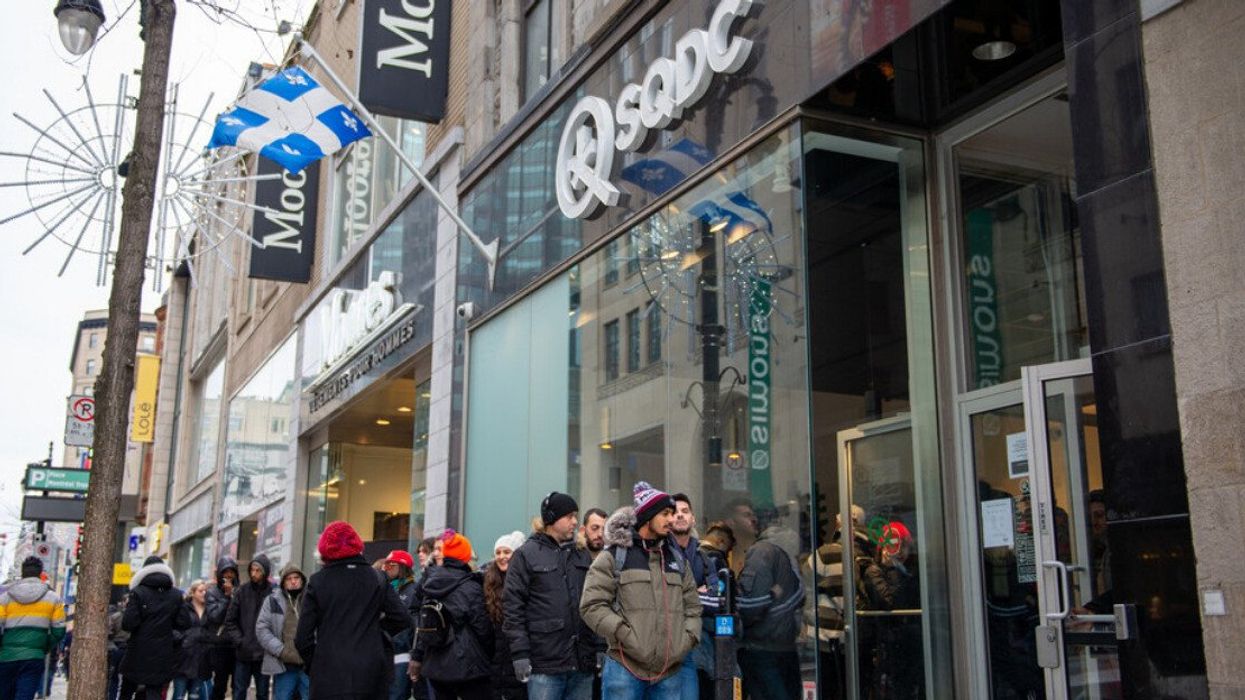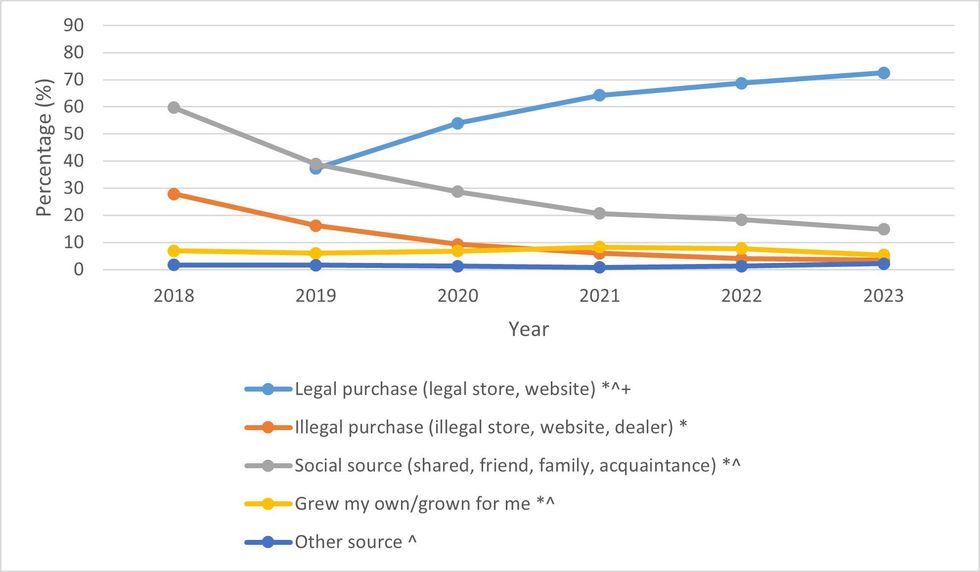Legal Cannabis Is Winning Over More Canadians (& So Are Edibles), Says Health Canada
Consumption habits among youth are shifting, too.

People line up outside an SQDC in Montreal.
As the smoke clears on weed stigma, Health Canada's annual survey on cannabis consumption habits reveals Canadians are not just rolling with it, but eating it up too.
This year's report indicates a significant shift in the public's approach to cannabis, with an increasing preference for non-smoking options, including edibles and oils. The results seem to reflect a maturing market and a transformative period in Canada's relationship with the once-controversial plant.
Shifting patterns & budding trends
Youth engagement in cannabis shows a complex pattern. The survey indicates that 43% of youth aged 16 to 19 dabbled in cannabis in the past year. The figure not only marks an increase from previous years but also signifies a mixed trajectory over time.
The most recent numbers are similar to the rates observed in 2019 and 2020, which stood at 44% each year. By comparison, the rates in 2022 and 2018 were lower, at 37% and 36% respectively. The fluctuation highlights changing attitudes and behaviors among young Canadians towards cannabis use, influenced by factors like legalization, societal acceptance, and increased availability of cannabis products.
Stability marks the rhythm of daily or near-daily cannabis use, hovering around 25% for the general population and approximately 20% for youth since 2018. Similarly, the proportion of Canadians at high risk of cannabis-related problems remains consistent at about 3%.
A shift in consumption methods has emerged, with smoking, although still prevalent, giving way to edibles. In 2023, 52% of cannabis users opted for edibles, trailing closely behind the 63% who preferred smoking. Vapourizing with vape pens or e-cigarettes also carved out a significant share, chosen by 33%.

Legal cannabis has seen a surge in popularity, with 73% of users in 2023 reporting legal sources as their go-to, a significant leap from 37% in 2019. This shift also corresponds with a decline in reliance on illegal sources.
Driving under the influence of cannabis shows a positive downtrend, with incidences decreasing significantly since 2018. The survey data elucidates that only 16% of users drove after recent use in 2023, maintaining the reduction observed since 2021.
Canada's cannabis consumers
The CCS in 2023 reached out to approximately 11,690 respondents, covering a wide demographic spectrum. The survey's thematic coverage extended from knowledge and attitudes to higher-risk assessments and medical use. New to this year's survey were identification of legal cannabis sources, knowledge about cannabis packaging requirements, and an alternative tool for assessing harmful cannabis use.
Age-wise, cannabis use was highest among 20- to 24-year-olds, consistent with previous years. A higher percentage of men reported cannabis use compared to women. The survey also highlighted sexual orientation and birthplace as factors influencing cannabis use patterns.
Cannabis use among those identifying as bisexual was notably higher at 56%, compared to 48% among those identifying as lesbian or gay, and 23% among those who identified as heterosexual or straight. Individuals born in Canada reported higher cannabis use (29%) compared to those not born in Canada (17%).

Education and occupation emerged as influential in cannabis consumption habits. Those engaged in schooling or employment reported higher usage rates than their counterparts. The survey observed that individuals with less than a high school diploma or just a high school diploma reported the highest rates of past 12-month cannabis use (32%), compared to those with a post-graduate degree or diploma (21%). In the realm of occupation, 30% of respondents who were employed or on vacation from a job or business reported using cannabis in the past year, higher than the 20% usage rate among those not working.
When it came to product preference, dried flower/leaf remained popular but saw a decline, while edible cannabis and vape pens saw an uptick. This indicates a broadening in the types of products Canadians are choosing to consume.
Leafing the old behind
The 2023 Canadian Cannabis Survey highlights a significant shift in the country's approach to cannabis. Increasingly, Canadians are opting for edibles and legal sources, indicating a move towards more responsible use and a better-informed public. The trend could serve as a model for other nations grappling with legalization, demonstrating the potential for a regulated market to foster safer consumption practices.

